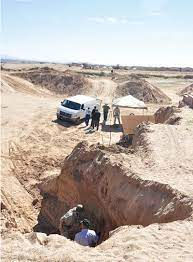
Discussion
Forensic Anthropology
Forensic anthropology is defined as the application of anthropological study, particularly skeletal biology in a medico-legal setting. Forensic anthropologists have three main goals;
- positively identify the deceased
- return the remains to the families of victims
- assist law enforcement in the prosecution of perpetrators.
Forensic anthropologists assist in cases where there are skeletonized or decomposing remains, the person cannot be identified visually, or if there is any suspected violence or trauma. They use various anthropological methods and techniques to identify any traumas in a victim and estimate their age, sex, and ancestry. They also try to positively identify the victim.
Speculation: Why is the case still unsolved?
This question does not have a definite answer. There are many different contributing factors as to why this case hasn't been solved yet.
One potential reason is that there was a lack of physical evidence, like foreign DNA or fingerprints to point to a specific person.
There is also no established crime scene for investigators to comb through for evidence. It is unknown where the crimes were actually committed because the bodies were discovered at a secondary crime scene.
Another possible reason for this case going unsolved is that one of the main suspects in the case, Lorenzo Montoya, was killed and law enforcement never got a chance to fully investigate him. He could have been hiding a key detail that would connect him to the murders.
Forensic Anthropology in the West Mesa Murders
Forensic anthropology played a large role in the West Mesa Murders case. Without forensic anthropology, the victims may not have been identified and returned to their families. When the bodies were first discovered in the empty lot, the remains were skeletonized. Anthropologists had to put together biological profiles for each victim and estimate a postmortem interval (time since death). The biological profile included the sex, ages, and ancestries of all the victims found. Anthropologists also analyzed the remains for perimortem or postmortem injuries (injuries around or after the time of death) that could help piece together what happened to them.
Once an estimate for postmortem interval and biological profiles had been established, anthropologists worked on positively identifying the victims. They did this by comparing the unique characteristics found in the victims to missing person reports matching the biological profiles. To narrow down potential matches, anthropologists will typically use past dental or medical records of the potential match and compare them to the remains. In the West Mesa murders, forensic anthropologists were able to positively identify all the victims.

